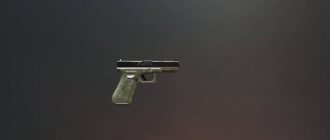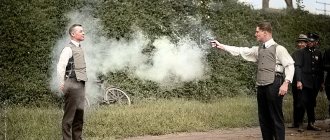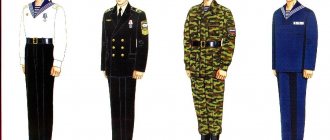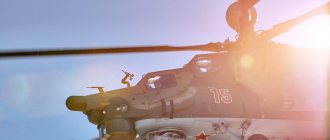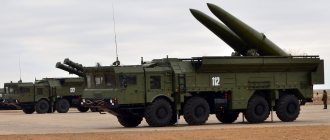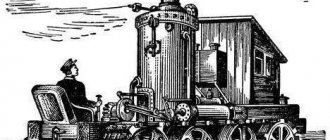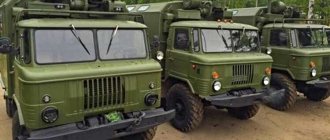A tactical knife is considered a combat knife, but does not belong to the category of edged weapons according to legal standards. It has clear characteristics, but is divided into several types - urban, for concealed carry, for survival. A separate group considers tactical folding knives, which can be main or auxiliary.
The price of tactical knives ranges from 400-6000 rubles and depends on the purpose of the product and the manufacturer.
Tactical knife: what is it, features
A tactical knife is a tool that is designed for combat use, but does not belong to the category of edged weapons according to current legislation. Modern manufacturers call a variety of knives tactical, more often the term is a marketing ploy - it is necessary to increase sales of weapons with serrated sharpening and deep fullers. Their characteristics will help give a specific definition of tactical knives.
| Characteristic | Short description |
| Blade length | Within 140-180 mm |
| Blade geometry | The tip of the blade is sharp, the shape is dagger-like, the descent on the butt is long |
| Butt thickness | 3-5 mm |
| Sharpening type | Wavy, there is a serrator on one or both sides of the blade, a saw can be located on the butt |
| The presence of a guard, stop, recesses | The thickness of the blade is reduced to 2.4 mm, there is a full guard, there may be a stop that belongs to part of the blade |
| Handle feature | It is bulky, although this makes it inconvenient to use the knife without tactical gloves |
| Presence of a scabbard | Must be present, made of nylon and have a plastic insert |
Weapon criteria
In addition, there are clear criteria by which tactical knives differ from other types of edged weapons:
- Design . Always individual, because it is developed to meet the needs of a specific army unit.
- Ergonomics . It is believed that a tactical knife should lie comfortably in the palm of your hand, even if a person is under severe stress. The handle should not have any loops, sharp corners, or protruding elements. The handle must have grooves for the fingers - this makes it possible to hold the weapon comfortably and securely in your hands from the moment it is fixed.
- Size . Determined by purpose. For example, a police officer will never carry a knife 400 mm long, because it will interfere with movement and weigh the weight of the body to the side. A universal tactical knife is considered to be one that has a length of 220 mm. It is desirable that it be folding and with a blade of 75-100 mm.
- Materials . Stainless steel is used for the blade; manufacturers often use W steel. It has maximum density/hardness and can cut other metal blades. A significant disadvantage of the latter is that it is susceptible to corrosion processes, which significantly reduces the service life of the knife.
- Handle . Made from a variety of materials, it is important that it is stabilized. This characteristic ensures that the handle of a tactical knife is resistant to cracking and drying out of the material; the stabilized material does not absorb sweat, gasoline, water and oil. The ideal materials are ivory, animal horns and hardwood.
Tactical knife
- Blade . It is distinguished by the presence of a tip and a cutting edge; the thickness of the blade should vary between 3-5 mm - this increases the wear resistance of the weapon and ensures fracture toughness. The recommended blade hardness is 57-59 Rockwell units. A full-fledged tactical knife must have a serrated knife.
- Folding or fixed . The choice is made individually and depends on what the tactical knife is intended for. Most often, people have two knives in their arsenal - both a folding one and a fixed one.
- Wearing . Tactical knives must be carried in a sheath, and sheaths can be made of Kydex, nylon and genuine leather. Directly on the handle there is a metal clip, with the help of which the weapon is secured to the belt.
- Reputation . A truly high-quality tactical knife should be purchased from a manufacturer with an impeccable reputation. He will not put his initials/company name on the blade; he will sell his products through dealers and on serious trading platforms.
We recommend reading the article about the best switchblades. From it you will learn about the main characteristics of switchblades, their types and handmade switchblades. And here is more information about the types of combat knives.
Purpose
Tactical knives solve certain problems:
- Use in the field. A weapon of this type will help in many ways - chop thin branches for a fire, open a tin can, cut food, butcher the carcass of a caught animal, and so on.
- Release in extreme situations. We are talking about cutting slings and ropes in which a person is entangled, cutting a belt in a car and other options for the need to quickly free oneself from bonds.
- Removing obstacles. If a special unit began its offensive and suddenly discovered an obstacle on the way to the target (sometimes reconnaissance does not provide accurate data), then a tactical knife will help solve the problem. In this case, the weapon is used as a crowbar or a hammer. If the tool is of high quality, it will withstand such an aggressive load.
- Equipment for shooting area. With a knife you can remove branches, plants, and remove large stones from the ground. With a truly high quality tactical knife, you can count on easy digging.
- Cutting networks. This is important for divers who may become entangled in fishing nets during their work. If there is no knife at hand, then the person has little chance of staying alive.
- Release from handcuffs. Modern ones are made not of metal, but of plastic. It is impossible to remove them, but anyone can cut them with a tactical knife, although there is a risk of injury to the hands.
From the list of purposes, we can conclude that a tactical knife should be as durable as possible and have high quality characteristics. This tool most often has to do heavy work, for which a crowbar, sledgehammer, or hammer would be optimal.
Popular myths
There are many myths around the knife with the prefix “tactical”, which are quite easy to refute. Here are just a few of the most popular:
- The weapon has maximum cutting properties. In fact, this is not the case, because manufacturers reduce these properties to increase mechanical resistance to aggressive influences. Cutting any material with a tactical knife is inconvenient, because its weight is 400 g, and the thickness of the blade can reach 7 mm. It is also important that the sharpening angle is obtuse and amounts to 60 degrees.
- Tactical knives are edged weapons. The myth appeared against the backdrop of confusion between real combat knives and tactical ones, which even by legal standards do not fall under the criteria of edged weapons.
- This is the most reliable cutting tool. This opinion arose against the background of the fact that “everything for the army is made of the highest quality.” This is partly true, but tactical knives cannot be called cutting tools at all, nor can they be classified as reliable.
Watch the video about military tactical knives:
Combat properties
As a rule, most combat knives have a blade with a length of 150 to 200 mm and a width of 30 to 60 mm, made of high-alloy steel, which in itself implies good cutting properties. The specified length of the blade, in turn, provides deep penetrating wounds, and given the depth of the location of vital organs in the abdominal cavity and chest, it is guaranteed to cut them even at fairly sharp angles of injection.
The specified blade width ensures a reduction in the sharpening angle due to the possibility of increasing the blade sharpening width. This ensures an increase in cutting properties in a constructive way. Moreover, even with stabbing blows, a wide blade leaves extensive wounds with large blood loss. Stiletto forms of bladed weapons are gradually being replaced by preferably cutting ones, in most cases with one-sided or so-called one-and-a-half sharpening. This trend is caused by a certain tactical focus of local conflicts and the spread of Philippine and Vietnamese systems for handling edged weapons.
Considering the high firepower and technical equipment of a modern fighter, it can be assumed that the requirements for the design of a combat knife and the supposed injuries caused by its use should be similar in severity to injuries from the use of a pistol. This is due to the emphasis on the speedy neutralization of the enemy, and not on his guaranteed death due to internal bleeding caused by a through wound with a stiletto with a small-section blade.
Attention - a myth: the hollow on the blade is needed for the outflow of blood. Krovostok is nonsense
There was not, is not and will not be a blood flow on the blade of a knife in nature. It's pointless there. However, the legend that the notch was created so that blood would flow out of the wound and not be plugged by the blade has lived for generations. The hollow along the blade - the fuller - serves to lighten the blade if the balance needs to be shifted towards the guard. Yes, yes, exactly the guards, and not some kind of “antennae”.
Tactical folding knife
Tactical folding knives have advantages over standard fixed ones:
- when folded, such a weapon is small in size and can be carried without a sheath in a pocket;
- they can be opened/closed with one hand and even two fingers;
- you can find a tactical folding knife with a spring mechanism, where the blade is thrown out with one click on the clip;
- can be worn on the trouser belt using clips or staples.
Tactical folding knife Benchmade 7505-132
Story
Historically, for a long time, the tactical folding knife was not perceived as a combat knife; it was preferred by Luftwaffe pilots from Germany during the Second World War. Such neglect is due to the lack of reliable latches in those days, which made it impossible to open the knife blade with one hand and securely hold the blade in the cavity of the handle.
The first noteworthy tactical folding knife was created only in 1983 by Michael Walker. It featured a reliable spring retainer, a titanium handle, and a clip for attaching a weapon to a belt/belt.
Modern tactical folding knives generally come with an automatic spring lock, so the blade simply pops out of the handle when the clip is pressed.
1 of 2
Jackknife
A button that, when pressed, ejects and then locks the blade
It is interesting that such products are produced only by well-known brands and demand still exceeds supply, since the production process is labor-intensive and the cost of a tactical folding knife is high.
Classification
Among all tactical folding knives, two large groups stand out as classifications:
- the main one is a tactical, folding knife, specially designed for combat missions;
- auxiliary - the instruments are characterized by high mechanical and technical reliability, but are not intended to solve specific orders in army units.
Tactical folding knife for combat missions
Tactical folding knife for field travel
Main types
All main folding tactical knives are used in two cases:
- Units whose soldiers work in large crowds of people. Such weapons will also be useful to those who are forced to carry weapons secretly and at the same time have the opportunity to instantly use them when solving operational problems.
- Police officers to resolve non-standard problems. This happens extremely rarely, so “police officers” carry knives secretly, and for this, folding types are most convenient.
Tactical police knife
Auxiliary species
All auxiliary types of folding tactical knives can be divided into two groups:
- multi-subject (multi-tools),
- single-subject.
The first group includes those knives that allow you to comfortably and quickly solve various problems. Such a folding knife may contain small screwdrivers, a spoon, a tool for drilling holes in pliable material, and other devices. Multi-item folding tactical knives do not perform combat missions, but they make everyday life much easier.
Folding knife keychain Folding knife multi-piece Hunting folding knife
The second group includes weapons that have increased cutting capabilities. Often such a tool is used for rigging work, when it is necessary to cut cables, twines and ropes. In this case, cutting abilities are not even taken into account, because it is extremely inconvenient to take a large, standard fixed weapon out of the sheath and perform work “in weight”.
Regardless of the classification of folding tactical knives, they must meet the following requirements:
- maximum mechanical strength;
- automatic opening system (in extreme cases, a reliable mechanical one for opening with one hand);
- lock design suitable for repair;
- Comfortable handle for confident work with gloves.
Folding knife with bearings
Famous models
Famous models of the Second World War belong to Russian, German, American, and British production. Each state developed its own “national” version of edged weapons.
The NR-40 ("scout knife") was a Soviet combat knife introduced in 1940 and used throughout World War II. The HP-40 has a 152mm blade with a clamp point, black wooden handle and S-shaped guard. The guard is "inverted" (unlike most S-shaped guards, it curves towards the edge). This made it possible to work with a knife using a reverse grip.
Scout knife HP-40.
At the beginning of the 20th century, Finnish puukko knives began to become popular among criminals in most cities of the Russian Empire. Local knife makers then began modifying the Finnish forester's tool to make it more useful for fighting; for example, making the blade longer, changing from a flat back to a pinch point, and adding more protection. The resulting weapon, still called the "Finnish knife" or "finka" in Russian, looked somewhat different than the typical puukko.
Finnish knives were ubiquitous in the criminal world of Russia and the Soviet Union during the first half of the 20th century. Because of the criminal community, the Finnish knife was banned in the Soviet Union in the 1930s, just as the switchblade would later be banned in the West. The Winter War revealed a number of shortcomings in Soviet weapons; Among other things, the Soviet infantry lacked a good combat knife.
As a result, in 1940, the Soviet army adopted the HP-40, essentially a serial version of the Russian bandit "Finnish".
In the USA, the famous model was the Ka-Bar blade. This is the trademarked, modern popular name for a combat knife first adopted by the United States Marine Corps in November 1942 as the 1219c2 combat knife (later designated the USMC Mark 2 combat knife or combat utility knife), and later adopted by the United States Navy in as a US Navy Mark 2 utility knife.
Additionally, Ka-Bar is the name of the related knife manufacturing company Ka-Bar Knives., Inc. (formerly Union Cutlery Co., New York, subsidiary). Although Ka-Bar Knives, Inc. currently produces a wide range of knives and cutlery, it is best known for the Ka-Bar Fighting/Utility knife, which traditionally used 7-inch (17.8 cm) 1095 carbon steel with a clip and leather handle.
World War II is known for the proliferation of bayonet knives. Designed in 1942 by Wilhelm Gustloff Werke in Suhl and manufactured by Karl Eichhorn in Solingen, the "SG42" was intended to complement and replace the original Karabiner 98 bayonet. Although this was largely proven, there was a shortage of business and utility knives, which were usually purchased privately . The "SG42" was designed as a combat knife, but could also be mounted as a bayonet.
After consistently positive reception of several hundred pieces, the troops gave it a shot in 1943, production was approved by Adolf Hitler, but this had to happen due to the cost of converting production before the end of the war. In 1944, the Army Ordnance Bureau issued an order for 10,000 units, production began, but due to the end of the war only a small number were delivered.
The best American tactical knives: rating
American tactical knives are often produced with a fixed blade, and these are the ones that are included in the ranking of the best.
SOG Seal Pup Elite
It is of high quality, has a medium blade size, the steel of which is cryogenically hardened. The handle is made of nylon, which is pre-reinforced with fiberglass. The handle has anatomical geometry, shallow notches, and this ensures reliable fixation of the knife in the palm, even if it is wet.
American tactical knife SOG Seal Pup Elite
The weight of the knife is only 153-155 g, the blade length is 123 mm, and the total length is 241 mm. Cost – $125.
Ontario Ranger Karambit EOD
Tactical, but made in the form of a classic karambit. It features a sharp blade 89 mm long, the total length of the knife is 191 mm. The steel blade is coated with black powder paint, which increases the weapon’s resistance to mechanical stress and corrosive processes. A comfortable grip is provided by the micarta handle.
American tactical knife Ontario Ranger Karambit EOD
The knife must have a sheath; it must be worn and stored in it. Price – $115.
Buck Intrepid-L
It weighs 218 g, is designed for really hard work, and the manufacturer provides a lifetime warranty. The blade's manufacturing style is “tanto”, the total length is 217 mm. The handle is made of cast nylon and has characteristic grooves for the fingers - a comfortable grip is provided both forward and backward.
American tactical knife Buck Intrepid-L
The set includes a sheath that is considered universal and can be attached to the belt of trousers. Cost – $100.
Schrade SCHF14
These knives are considered affordable because they have a fairly low cost. This does not mean the tactical weapon is of poor quality, because it has the following characteristics:
- the blade is made of high carbon steel;
- the handle has linings with an original texture;
- total length of the knife – 200 mm;
- blade length – 86 mm;
- weight – 159 g.
American tactical knife Schrade SCHF14
The cost of these American-made tactical knives is only $50.
Kukri
This is one of the best combat knives used by the Gurkhas - the special forces of Nepal. The blade of this knife is sharpened from the inside and has a characteristic “falcon wing” curvature. Kukri means that the owner belongs to the warrior caste, so Nepalese try not to part with their blade.
The Kukri is made of high carbon steel, making it suitable for hunting and cutting forest paths. At the same time, it is more susceptible to corrosion than other knives due to its low chromium content. If you decide to purchase one of the best kukri combat knives, remember that it requires constant maintenance. The equivalent of this combat knife is shown in the photo:
Russian-made tactical knives: TOP 3 most popular
There are also Russian-made tactical knives on the market, the TOP includes the 3 best (delta, aggressor, storm), but other models are also distinguished by their high quality and compliance with all requirements within the framework of international standards.
Delta from Kizlyar Supreme
Does not belong to the category of edged weapons, has the following characteristics:
- fixed blade;
- blade length – 150 mm;
- total length – 283 mm;
- blade material – stainless steel;
- handle material – nylon;
- Sharpening is double-sided and symmetrical.
Intended for use by tourists, it has quite good cutting abilities. The cost is 3800-4000 rubles.
Aggressor from Kizlyar Supreme
The weight of the knife is 262 g, the length of the blade is 150 mm, and the full parameter is 283 mm. The blade is made of high-carbon steel, the handle is made of modern nylon with grooves for a comfortable grip (direct/reverse). The sharpening of the blade is double-sided and symmetrical.
The knife belongs to the fixed category, the price is 3800 rubles.
Storm
Initially, the design was developed for soldiers from Marine Corps units. The blade is made of stainless steel, the handle is inert, so the weapon can be used not only for domestic/household needs, but also for close combat.
Tactical knife storm
The weight of the knife is 244 g, the length of the blade is 119 mm, the full parameter is 250 mm. The sharpening is double-sided, symmetrical, there is no serrator. The price ranges from 3000 rubles.
Tactical kitchen knife
Tactical kitchen knives appeared on the market recently, and gained popularity among consumers in 2016. Just at this time the company Mr. Blade presented its kitchen knives at an international exhibition and declared them tactical.
This type of tool has the following characteristics:
- total length – within 225-250 mm;
- blade length – 90-100 mm;
- handle material – kraton;
- blade material – stainless steel;
- weight – 180 g.
Tactical kitchen knife Mr.
Blade Such knives always come with a sheath - they are not relevant in the kitchen, but will be very convenient outdoors, “in the field.” They are made of Kydex and have loops and clips for wearing on the waistband of trousers or on a belt. By the way, the manufacturer considers the presence of a sheath to be the main “indicator” that a knife belongs to the tactical category.
Tactical kitchen knives are very convenient for cutting meat and fish and cutting vegetables. The tool fits comfortably in the palm of your hand, the handle made of modern materials does not absorb food odors or moisture, and does not slip out when working even with dense/fibrous products.
Tactical fixed blade knives
Tactical knives are recognized as the most reliable, high-quality knives by armies of almost all countries of the world and most often the choice falls on models with a fixed blade, two of which are recognized as the best - SOG E37SN-CP, MTECH USA XTREME MX-8054.
SOG E37SN-CP
The main advantage of this model is the high resistance of the blade to corrosion, and the disadvantages include a high risk of damage to the surface of the blade (it is easy to scratch). The blade does not have a serrated sharpening, but it is still quite easy for them to cut a rope or cable.
Tactical knife SOG E37SN-CP
The length of the blade is 125 mm, high-carbon steel is used in manufacturing, the handle is made of nylon, which is reinforced with fiberglass threads. The knife can be used underwater. Price – 4700 rubles.
MTECH USA XTREME MX-8054
It is very comfortable to wear and use, does not slip in the hand, but is quite heavy. The total length of the knife is 279 mm, the length of the blade is 152 mm. The handle is made of modern plastic, the linings are fixed to the blade shank with four screws. The handle has grooves for the fingers, so the hand does not slip even when working with hard/dense material - for example, if the blade is stuck in a bone.
Tactical knife MTECH USA XTREME MX-8054
The fixed blade tactical knife weighs 386mm. The guard is equipped with two holes that allow you to fix the tool on a stick, thus turning it into a full-fledged spear. The cost of the model is 1900 rubles.
Balisong
The Balisong is better known as the “butterfly knife” and was considered the best combat knife in Russia in the 1990s. This is a Filipino invention that has become popular all over the world. It is easy to carry and use, lightweight and thin blade.
In 1905, the world saw an improved version of the balisong: two handles, two loops, two stops and a latch. The classic fighting knife that every Filipino boy owns has a blade 12-16 centimeters long.
Opening a balisong is an art. Its rotation with variable opening is called inversion. Dangerous tricks invented by Americans. Watch a video of a masterful somersault using one of the ten best combat knives:
The legendary balisong from the Nozhemir brand is presented on our website. Its blade is 8 cm long and only 2.9 cm wide. The carved handle is made of steel. This knife is a wonderful gift for a real man!
The Philippines has a strong firearms culture, so the traditional farmer's Bolo knife underwent many changes during the revolution. The bolo has a curved blade with a back sharpening and strongly resembles a machete. Filipinos have been using this knife to cut vines and small trees since the early Middle Ages. The center of gravity of the bolt is shifted as far as possible from the handle for a more accurate strike - this is its main feature.
Bolo is one of the best combat knives, which you can check in the photo below:
Tactical scabbard
Sheaths for tactical knives have the following quality characteristics:
- high functionality;
- strength of the material and, accordingly, long service life;
- presence of hard plastic insert;
- universal fastenings.
Tactical sheaths can be worn on a belt or elements of the unloading system (“unloading”). The case is made of nylon material - it is thin, light in weight, but at the same time durable.
Watch the video about tactical sheaths:
The weight of the sheath is only 40-45 g, the cost ranges from 800-1500 rubles.
wrap
We have reached the end of the article and now you have learned some basic information about tactical knives and how to use them. Always remember to carefully study the characteristics of a knife before choosing the flashiest one on the market: think about your needs and whether this knife will work best for you.
Do you have a favorite tactical knife? If so, let us know below in the comments section!
Urban tactical knives
Urban tactical knives have the following characteristics:
- the total length of the tool ranges from 104-290 mm;
- blade length does not exceed 100 mm;
- Stainless steel is used in production;
- The weight of the knife is small and usually does not exceed 210 g.
The main difference between this type of knives is that they are mostly folding. This is due to the fact that on tight streets it is very inconvenient to carry a long, full-sized knife and taking it out for a fight will also be difficult. Folding tactical knives have an automatic opening system, so the blade is thrown out of the handle with one press of a button.
Watch the video about the urban tactical knife from Kizlyar:
The price of urban knives from the tactical category ranges from 1000-5000 rubles, if we are talking about branded products.
